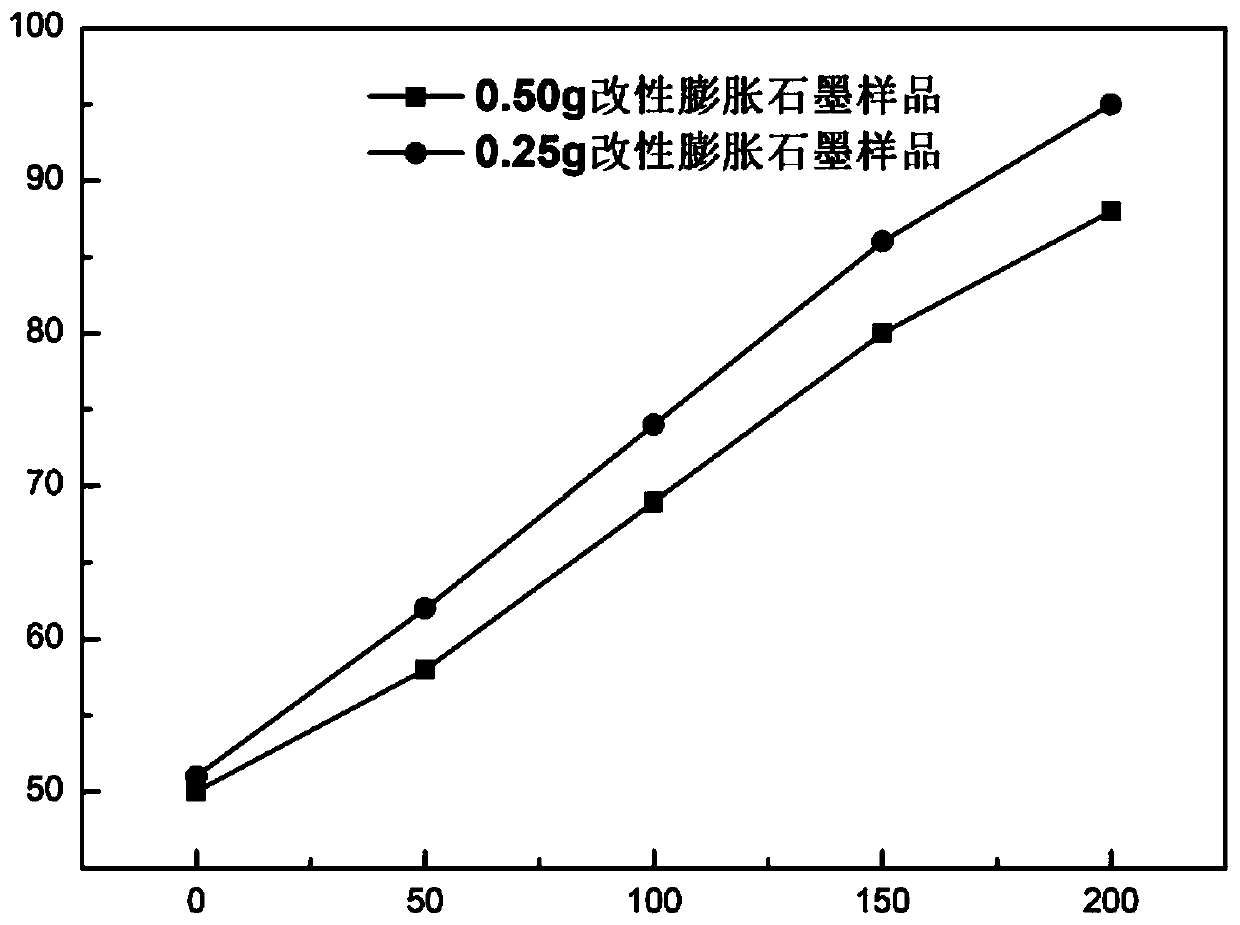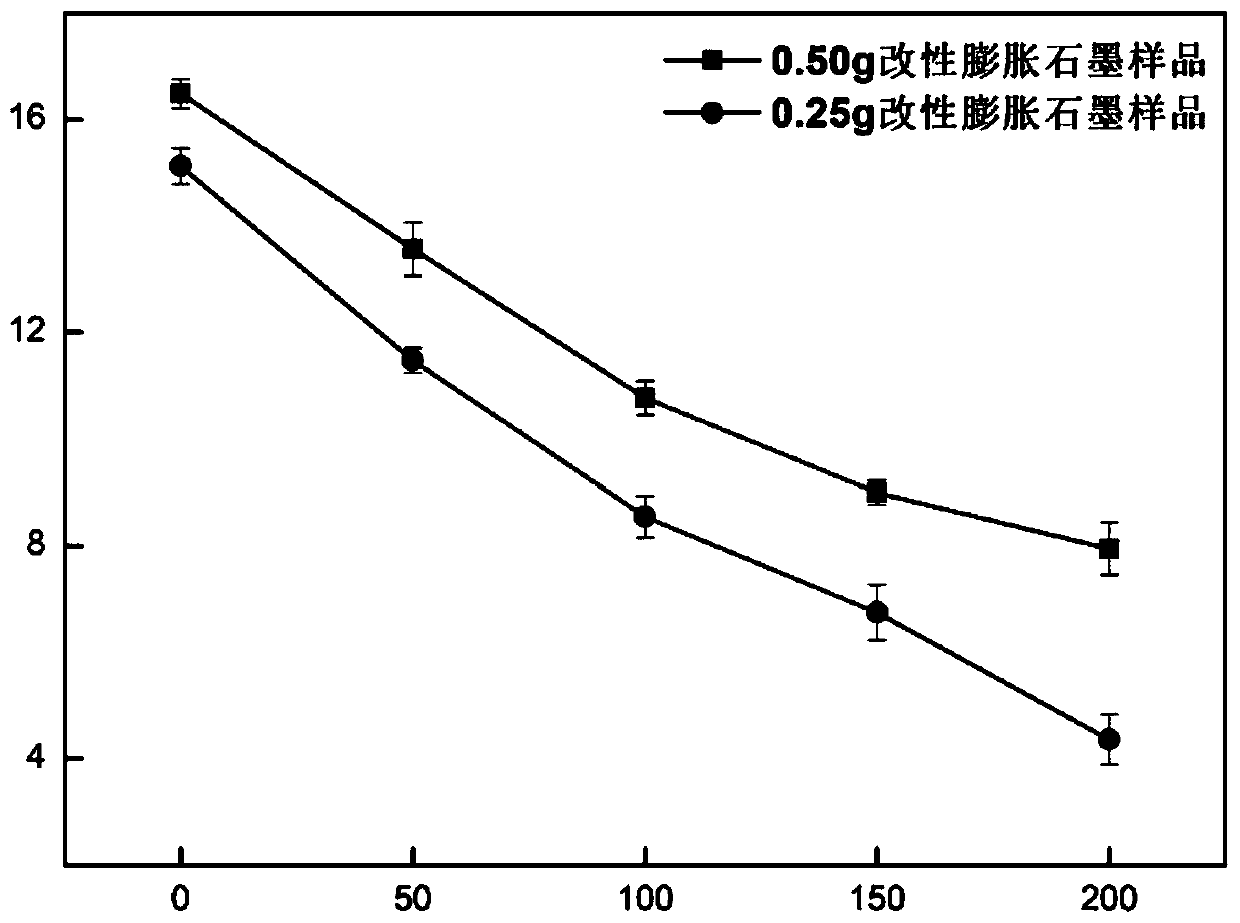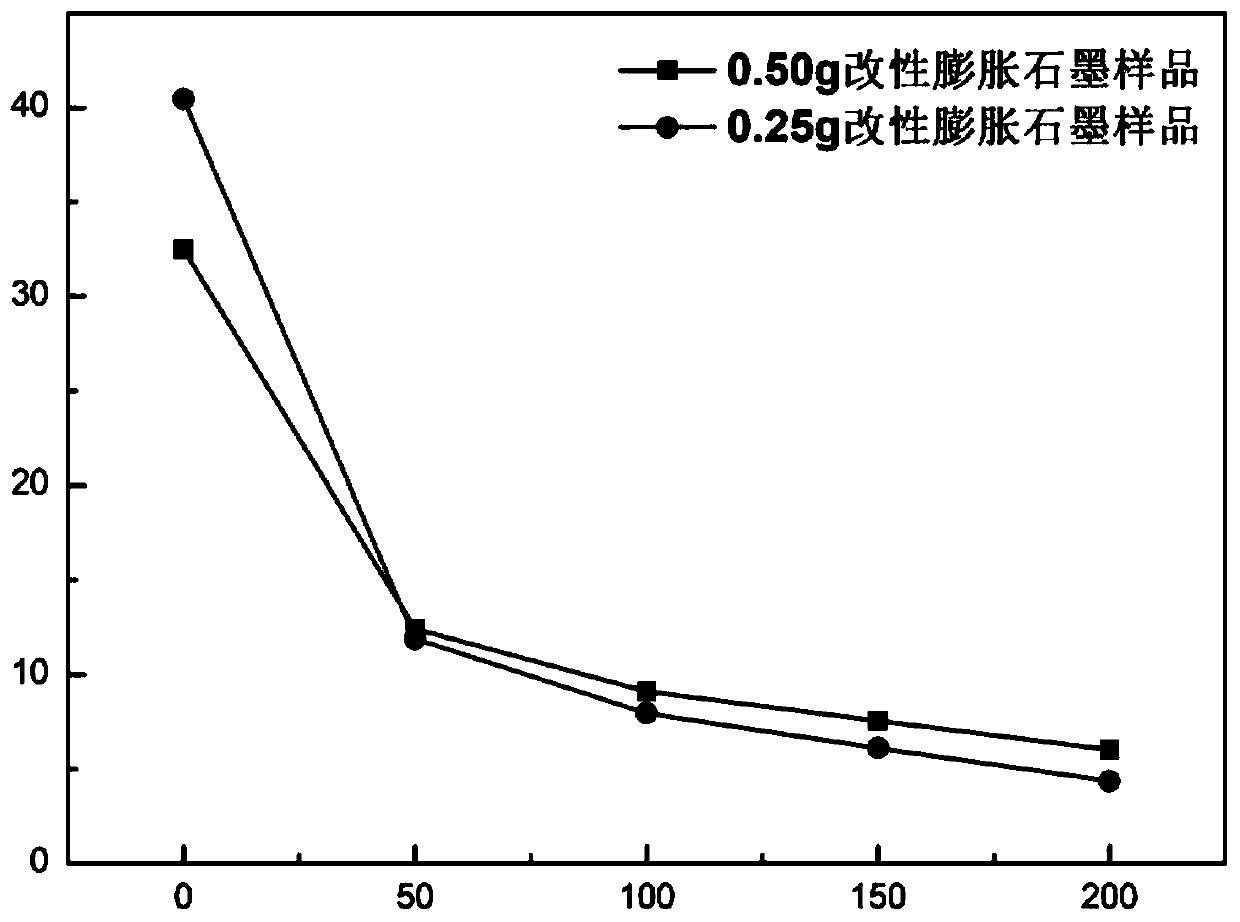Preparation method of expanded graphite-epoxy resin-organic silicon resin pressure-resistant composite material
A technology of expanded graphite and epoxy resin, applied in the field of the preparation of expanded graphite-epoxy-silicone resin pressure-resistant composite materials, can solve the problems of poor strength, elasticity and toughness, and achieve excellent mechanical properties and excellent tensile properties. and compression performance, a wide range of effects
- Summary
- Abstract
- Description
- Claims
- Application Information
AI Technical Summary
Problems solved by technology
Method used
Image
Examples
specific Embodiment approach 1
[0037] Specific implementation mode one: the preparation method of expanded graphite-epoxy resin-organic silicon resin pressure-resistant composite material described in this implementation mode, the specific operation is:
[0038] Step 1: preparing expanded graphite, and performing surface modification treatment on the prepared expanded graphite;
[0039] Step one one: get 80-120ml glacial acetic acid and add 400-600ml perchloric acid to be mixed with glacial acetic acid-perchloric acid mixed solution I;
[0040] Step 1 and 2: Take 8-10g of 100-mesh flake graphite and put it into a three-necked flask, add 20-40ml of glacial acetic acid-perchloric acid mixed solution I, stir in an ice-water bath for 10-30min and mix evenly to obtain glacial acetic acid-perchloric acid mixed solution II;
[0041] Step 13: Add 1-5g of potassium permanganate in N equal amounts to the glacial acetic acid-perchloric acid mixed solution II. After all the potassium permanganate is added to the glacia...
specific Embodiment approach 2
[0056] Specific embodiment two: In step one and three described in this embodiment, 1-5g potassium permanganate is divided into N times and added in glacial acetic acid-perchloric acid mixed solution II, and the value range of N is 8-12 Second-rate. Other undisclosed technologies and steps are the same as those in the first embodiment.
[0057] Such setting is mainly because adding all the potassium permanganate at one time will cause the system temperature to rise suddenly and cause an explosion, so it is added several times. Adding a small amount of potassium permanganate each time will cause the temperature of the reaction system to rise slightly. After the system temperature drops, add the next potassium permanganate. Generally, it is divided into about 10 times, with an interval of 1-2 minutes between each time. It will be strictly quantified, but generally for the balance of operation safety and reaction efficiency, the amount added each time is basically the same.
specific Embodiment approach 3
[0058] Embodiment 3: The watch glass 1 in step 14 in this embodiment is a glass watch glass. Other undisclosed technologies and steps are the same as those in the first embodiment.
[0059] In this setting, use a glass watch glass instead of a metal container as much as possible, because there is perchloric acid in the reaction process, which may cause metal corrosion and pollute the sample, which will eventually affect the material parameters and performance after the experiment.
PUM
| Property | Measurement | Unit |
|---|---|---|
| tensile strength | aaaaa | aaaaa |
| compressive strength | aaaaa | aaaaa |
| tensile strength | aaaaa | aaaaa |
Abstract
Description
Claims
Application Information
 Login to View More
Login to View More - R&D Engineer
- R&D Manager
- IP Professional
- Industry Leading Data Capabilities
- Powerful AI technology
- Patent DNA Extraction
Browse by: Latest US Patents, China's latest patents, Technical Efficacy Thesaurus, Application Domain, Technology Topic, Popular Technical Reports.
© 2024 PatSnap. All rights reserved.Legal|Privacy policy|Modern Slavery Act Transparency Statement|Sitemap|About US| Contact US: help@patsnap.com










